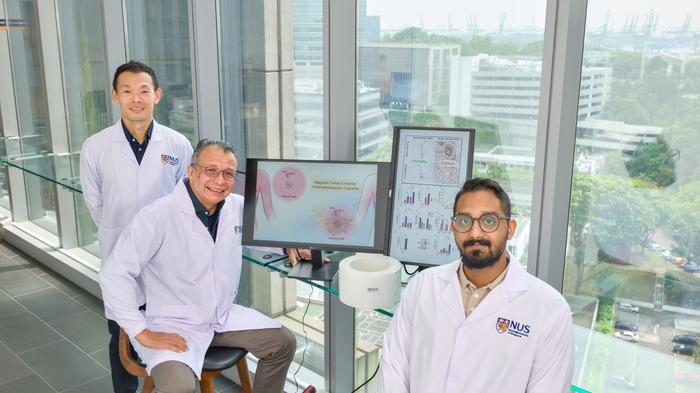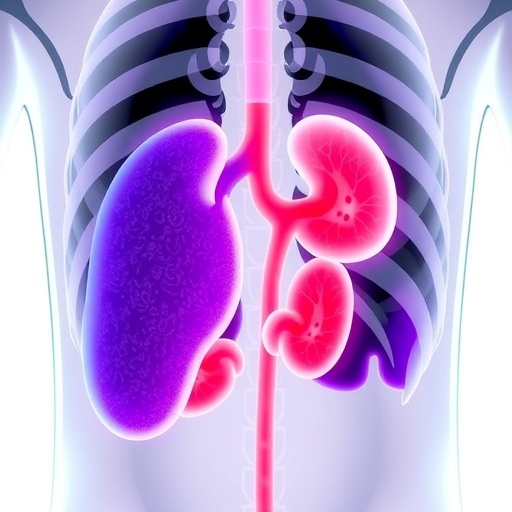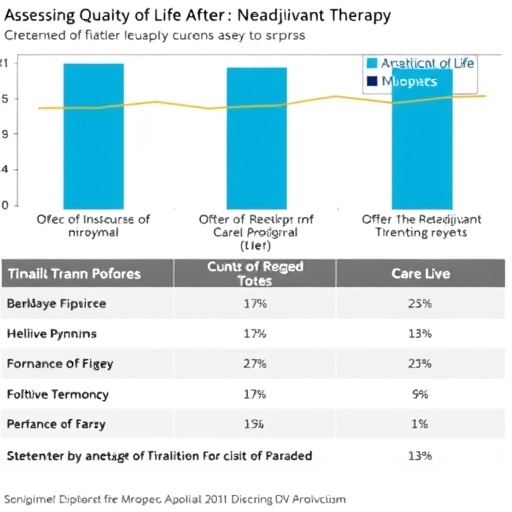
Researchers at the National University of Singapore (NUS) have achieved a remarkable breakthrough in the quest for improving chemotherapy outcomes through a non-invasive technique. This innovative method employs brief magnetic pulses to enhance the uptake of doxorubicin (DOX), a chemotherapy drug commonly used for breast cancer treatment. This pioneering study, led by Associate Professor Alfredo Franco-Obregón, marks a significant advance in addressing one of the major challenges associated with chemotherapy: the damaging effects on healthy tissues surrounding cancer cells.
Doxorubicin is renowned for its effectiveness in combating various forms of cancer, including breast cancer, by targeting the DNA of malignant cells to inhibit replication. While its efficacy is well-established, one of the critical drawbacks remains its non-selectivity; DOX tends to affect both cancerous and healthy cells alike. Consequently, patients undergoing treatment frequently experience a spectrum of adverse side effects, ranging from manageable to severe, which can sometimes lead to treatment discontinuation. The research team at NUS seeks to change this narrative by leveraging magnetic field therapy to facilitate a more targeted approach.
In their study, the researchers employed brief and localized magnetic pulses to stimulate increased uptake of DOX specifically into breast cancer cells. Their investigations revealed an intriguing interaction with a calcium ion channel termed TRPC1, which is often expressed at elevated levels in aggressive forms of cancer. When these cancer cells are subjected to magnetic field exposure, the TRPC1 channels are activated, thereby amplifying the cell’s ability to absorb doxorubicin more effectively. This crucial mechanism of action highlights the potential for reduced drug dosage, enhancing chemotherapy outcomes while minimizing collateral damage to healthy tissues.
The experiments conducted were meticulously designed to assess the differential impacts of magnetic field therapy on both human breast cancer cells and healthy muscle cells. The result was particularly telling; the cancer cells exhibited a significantly increased uptake of DOX when exposed to these magnetic pulses. Notably, the healthy cells showed little to no increase in susceptibility to cell death, which underscores the protective effect of this innovative therapy on non-cancerous tissues—a major consideration for oncologists when determining treatment modalities.
Additionally, the research team found that a mere 10 minutes of magnetic field exposure could decrease the required concentration of the drug needed to achieve a similar apoptotic effect on cancer cells by fifty percent. This suggests that utilizing magnetic pulses allows for lower doses of the chemotherapy agent, conceivably reducing the risk of systemic toxicity and enhancing patient quality of life.
By lowering the concentration of DOX needed to elicit a therapeutic response, the new magnetic-assisted method not only has the potential to improve treatment efficacy but also may minimize the adverse effects commonly associated with high-dose chemotherapy regimens, including cardiomyopathy. Importantly, the study firmly established that inhibiting TRPC1 expression or function negated the enhanced uptake of DOX, implicating the channel as a viable target for precision therapy in aggressive breast cancers.
The findings of this study are particularly timely given the global prominence of breast cancer as a leading cause of cancer-related mortality among women. As conventional chemotherapy continues to present considerable challenges, the need for targeted therapies that optimize drug delivery while safeguarding healthy cells has never been more pressing. Research indicates that a significant proportion of women experience debilitating side effects, and a targeted approach such as this may not only allow for improved compliance but also extend the therapeutic options available to clinicians.
Furthermore, this method paves the way for innovative developments in precision oncology, addressing one of the most daunting challenges present within current chemotherapy protocols—the toxicity to non-cancerous tissues. By refining drug delivery systems to focus on cancer cells precisely, there is an immense potential for reducing systemic side effects, thereby revolutionizing how breast cancer is treated and ultimately enhancing the quality of life for patients.
Looking to the future, the research team envisions translating these promising laboratory findings into clinical practice by implementing localized magnetic field exposure during cancer treatments in patients. Such advancements could potentially validate and amplify the effectiveness of targeted drug delivery while ensuring a more favorable safety profile.
As plans to patent this approach and establish a startup grounded in the treatment of breast cancer progress, the team is actively seeking partnerships with investors in both Southeast Asia and the United States to propel this innovative therapy from the bench to the bedside. The hope is that this breakthrough will ultimately contribute to more effective and patient-friendly treatment options, representing a significant step forward in oncological therapeutics.
This novel strategy demonstrates a paradigm shift in how oncologists may approach the management of breast cancer treatment by combining established and emerging technologies. As researchers delve deeper into the interaction between magnetic field therapy and oncological drug delivery, this methodology could serve as a prototype for other cancer treatments, establishing a new standard in the fight against malignancies.
As the medical community continuously strives to refine cancer therapies to optimize both efficacy and safety, the integration of scientific developments such as these is crucial. By harnessing the power of magnetic fields alongside traditional chemotherapeutics, there is a promising trajectory emerging for the future of cancer management. The implications of this research not only highlight the potential of novel treatments but also symbolize hope for patients facing the challenging realities of cancer diagnosis and treatment.
Subject of Research: Magnetic field therapy to enhance doxorubicin uptake in breast cancer cells
Article Title: Brief Magnetic Field Exposure Stimulates Doxorubicin Uptake into Breast Cancer Cells in Association with TRPC1 Expression: A Precision Oncology Methodology to Enhance Chemotherapeutic Outcome
News Publication Date: 18-Nov-2024
Web References: Cancers Journal
References: doi:10.3390/cancers16223860
Image Credits: Credit: NUS Institute for Health Innovation & Technology
Keywords: Cancer research, chemotherapy, magnetic therapy, precision oncology, breast cancer, TRPC1, doxorubicin





